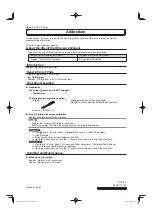
LT360 Precision Turntable
User Manual
LT360 Precision Turntable
User Manual
22
The LT360 is truely a universal turntable offering six different methods of
control for every possible application:
■
USB
(computer)
■
RS-232
(computer)
■
TTL Pulse
(computer, analyzer, etc)
■
Analog Input (computer, chart recorder, plotter, etc)
■
Front Panel
(manual control)
■
LR360
(remote manual control)
The LT360 Windows application software can control up to 8 turntables
with either USB or RS-232 linking. A Win32 DLL is also provided for custom
programming which can manage up to 128 turntables connected via USB or
RS-232. Control of the LT360 can also be facilitated through custom
programming using RS-232.
Note: See the Programming folder on the CD, or in the installed directory, for
more information on the LT360LIB.DLL and RS-232 programming methods.
The TTL Pulse Input provides a basic digital interface which can be driven by
many analyzers for simple step control.
The Analog Input provides a highly accurate analog interface for direct
control of the turntable position.
3.2 Control Methods
67
■
Acceleration Function
This group box selects the Acceleration Function used by the
LT360. Controlled acceleration/deceleration is an important
feature that permits heavy loads to be rotated, and with
minimal shock and disturbance. For typical applications the
1-
Flat
function provides excellent performance. See Chapter 7 for details.
■
Smart Torque
This feature takes advantage of the fact that the worm gear
drive system employed by the LT360 is irreversible. Meaning,
the platter is self-locking at its current position. The load cannot rotate the
platter itself. Therefore, it is not necessary to maintain full power on the
motor merely to hold its position when the platter is stopped.
When
SmartTorque
is set ON, the motor is powered down to half the
driving power 2 seconds after each movement stops. Motor power is
returned to full (controlled by Torque setting) when the motor starts again.
The use of
SmartTorque
greatly reduces the thermal heating in the motor
and driver circuitry, and produces a very efficient drive system. Under most
conditions and use, this feature should always be kept ON.
If a particular application demands that the motor power be kept constant at
all times, even when stationary (SmartTorque=OFF), then the maximum
torque should be set to 70% or less to prevent excessive heating. It is
difficult to envision what kinds of applications would require this behavior,
but the option is available if needed. Otherwise,
SmartTorque
should always
be kept ON.
















































